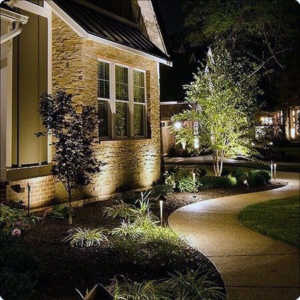Estate Sales are typically triggered by a death and involve turning loved one’s material possessions into money for distribution among family members. Professional estate sale companies offer a full-service approach to organizing, appraising, and marketing the sale.
It’s important to prepare for an estate sale before it begins. This includes clearing out clutter and providing clear pricing on items. Visit our Website to learn more.

The liquidation of assets in an estate is a complex process that requires careful consideration and planning. It involves the collection and inventory of tangible personal property, such as furniture, household goods, family heirlooms, jewelry, firearms, and automobiles. It also includes intangible personal property, such as stocks and bonds. In addition, the executor of the estate must ensure that all legal considerations are met. It is important to make sure that the estate’s assets are sold for their maximum value and are properly distributed to beneficiaries according to state laws.
The estate sale process can be emotionally difficult, particularly for surviving relatives who are dealing with grief and loss. It can be even more challenging for the estate executor, who must find buyers for everything in the estate and determine a fair price for each item. This can be a time-consuming process, but it’s essential for the success of an estate sale.
Estate sales are typically held when someone needs to sell a large quantity of items due to a life change. This can be due to a move, downsizing, or the death of a loved one. These events are a great opportunity to purchase quality products at discounted prices.
A successful estate sale requires careful preparation and planning, including a comprehensive marketing strategy. It is also important to set reasonable goals and stick to them. The goal should be to sell the estate’s assets for their maximum value, ensuring that all debts are paid and the beneficiaries are treated fairly.
It is important to plan an estate sale budget, which should include all expenses. This will help you avoid making costly mistakes and ensure that the estate is able to meet its financial obligations. It is also a good idea to consult with an attorney specializing in estate law before you begin the process of liquidating your assets.
Organizing an estate sale can be a daunting task, but it’s crucial to do it correctly in order to avoid any disputes with heirs or creditors. There are many different steps that need to be taken, from collecting and inventorying the estate’s assets to arranging a public sale.
Organizing an estate sale
Estate sales offer a unique opportunity to purchase a wide variety of items at an affordable price. They may be held by homeowners seeking to downsize, or by family members settling the estate of a deceased loved one. Organizing an estate sale requires careful planning to ensure efficient operations and a positive customer experience. It involves arranging items for maximum visibility, creating an inviting layout, and handling transactions efficiently. In addition, proper advertising and promotion boost attendance and enhance sales success.
The first step in organizing an estate sale is to create a list of all items to be sold. This list should include item names, descriptions, condition and proposed prices. The list also needs to be categorized for ease of shopper navigation and payment processing. Typical categories include furniture, kitchenware, artwork and collectibles. The grouped items should be strategically placed to highlight standout pieces.
Prior to the sale, the estate sale organizer should wipe down surfaces and remove sensitive information from personal items. This will help prevent theft during the sale and protect the privacy of the shopper. Depending on the size of the home and amount of items, it may be necessary to hire a professional estate sale company to conduct the event. If you decide to do so, compare quotes from several companies and make sure to get a contract with clear rates and responsibilities.
Once the estate sale begins, it’s important to have enough staff to handle the flow of customers. Having knowledgeable salespeople available to assist buyers and answer questions makes for an optimal shopping experience. This will minimize haggling and encourage more sales. It’s also a good idea to accept multiple payment methods, including cash and credit cards.
To maximize sales, estate sales should be conducted on a weekend and last two to three days. The organizer should advertise the sale on social media, community forums and local ads. Adding photos to the advertisement increases visibility and attracts potential shoppers. Ideally, the ad should also include the date and time of the sale. It should also note if there are any restrictions on the number of people allowed inside the property at one time.
Marketing an estate sale
Estate sales are events that allow families to liquidate the possessions of a loved one who has passed away. They can be a great opportunity for bargain hunters to find treasures at low prices. But a successful estate sale requires meticulous planning and strategic pricing to maximize profits. A well-planned sale starts with a thorough sorting of items and a carefully drafted marketing plan. It is also important to hire a company that has experience managing these sales and is transparent about their fees.
A professional estate sale company handles the logistics of the event, including advertising on various platforms and channels to maximize exposure. They may also organize items by categories and provide signage to simplify shopper navigation. They typically offer payment processing services, allowing customers to purchase items using cash or credit cards. They also provide security and customer service, and keep accurate transaction records to ensure efficient operation management.
Efficient operations start with early preparation and a well-defined schedule for staff to complete tasks before the sale opens. Staff members should arrive before the sale begins to finalize display setups and address any last-minute details. They should be assigned specific roles, such as greeting visitors and assisting with inquiries. They should be trained to effectively handle transactions, minimizing haggling and enhancing the shopping experience. Clear pricing minimizes haggling, but staff should be ready for reasonable negotiations on high-ticket items.
Effective marketing boosts sale visibility and draws a larger crowd. Advertisements should be placed on online platforms such as social media and estate sale listing websites, as well as traditional methods such as local newspaper ads and community boards. Ads should highlight unique and high-value items to attract attention and drive interest.
The marketing of an estate sale can be a complex process, and many municipalities have laws that regulate how estate sales are conducted. Some prohibit the distribution of fliers, while others limit parking availability or require a permit for selling items on public property. To avoid these complications, it is essential to familiarize yourself with the legal guidelines in your area before conducting an estate sale.
Managing an estate sale
An estate sale is a unique opportunity for consumers to purchase unique treasures and valuable items that may not be available elsewhere. The process of holding an estate sale can be overwhelming, but with careful preparation and strategic planning, individuals can turn the event into a successful experience that honors memories and maximizes profitability. By thoroughly assessing items, utilizing professional assistance, and engaging in effective marketing, individuals can transform an estate sale into a highly rewarding endeavor.
The first step of managing an estate sale is determining the amount of time needed to organize, price items, and promote the event. It is also important to establish realistic timelines, factoring in preparation tasks like cleaning and property clean-up that may impact the schedule. Once an estimated timeline is established, it can be helpful to coordinate with family members to avoid delays and ensure a smooth transition leading up to the sale date.
When deciding whether to use a company to manage an estate sale, it is crucial to ask for references and reviews. It is also a good idea to visit one of the company’s previous estate sales to see how they are organized and what types of items they have on offer. The company should also be able to provide details about their marketing plan, including online listings and local advertisements.
A professional estate sale company can handle every aspect of the event, from initial consultations to final cleanups. They can also provide appraisals to help determine item value and assist with pricing strategies. They can also stage items in an attractive manner to drive buyer engagement. They can also manage payment systems and staff to support buyers, ensuring a seamless transaction process.
In addition, an estate sale company can assist with the distribution of unsold items. This is particularly important if there are disputes among beneficiaries over the division of proceeds. This can also be a great way to clear out the home of a loved one who has recently passed away. In some cases, the company can arrange to donate items to charity or auction houses.








